Questions About Spray Foam Insulation?
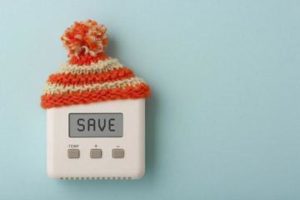 Most moisture that accumulates in a home is due to uncontrolled air leakage. Since Spray Foam is such a superior barrier against uncontrolled air ventilation, this problem is virtually eradicated. In addition, the rigidity of the insulation once dried makes it impervious to water retention, and does not support the growth of mould or mildew.
Most moisture that accumulates in a home is due to uncontrolled air leakage. Since Spray Foam is such a superior barrier against uncontrolled air ventilation, this problem is virtually eradicated. In addition, the rigidity of the insulation once dried makes it impervious to water retention, and does not support the growth of mould or mildew.
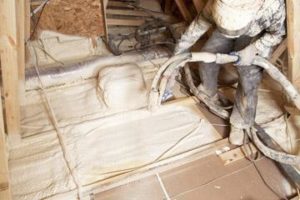 The chemical mixture is applied by our trained professionals to the area required, such as the underside of roofs, inside walls and around windows or doors. A chemical process causes the Spray Foam to both expand and harden, completely filling all nooks and crannies while permanently adhering to any substrate. This creates a long-lasting seal against air, moisture, dust, pollutants and pests.
The chemical mixture is applied by our trained professionals to the area required, such as the underside of roofs, inside walls and around windows or doors. A chemical process causes the Spray Foam to both expand and harden, completely filling all nooks and crannies while permanently adhering to any substrate. This creates a long-lasting seal against air, moisture, dust, pollutants and pests.
Making sustainable energy c hoices when renovating or building a home is a great way to get some of your costs back in the form of government grants, rebates and tax write-offs, not to mention the savings on your energy bill. It’s not unusual for homeowners to see the money they invested back in their bank account within five years. In addition, enveloping your home in a safe alternative to fiberglass or cellulose will result in a healthier home environment for you and your family, reducing trips to the doctor.
hoices when renovating or building a home is a great way to get some of your costs back in the form of government grants, rebates and tax write-offs, not to mention the savings on your energy bill. It’s not unusual for homeowners to see the money they invested back in their bank account within five years. In addition, enveloping your home in a safe alternative to fiberglass or cellulose will result in a healthier home environment for you and your family, reducing trips to the doctor.
 Yes, Spray Foam insulation can be effectively used to retrofit many areas of your existing home. Common areas for improvement include under or on top of roofing, in crawl spaces or foundations and under floors. All of these options will drastically improve the energy efficiency of your home.
Yes, Spray Foam insulation can be effectively used to retrofit many areas of your existing home. Common areas for improvement include under or on top of roofing, in crawl spaces or foundations and under floors. All of these options will drastically improve the energy efficiency of your home.
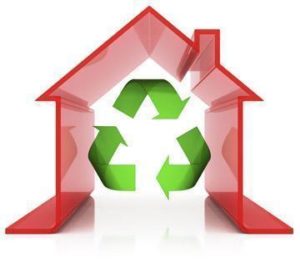 Using Spray Foam insulation means your home will require less building materials over its lifetime. Fiberglass batting and cellulose insulation both need regular replacement, and disposing of such materials is hazardous to the environment. In addition, one of the best ways to reduce your ecological footprint is to reduce your homes dependence on non-renewable energy sources (gas, electricity etc), and increase its efficiency as much as possible. Spray Foam insulation will maximize your energy efficiency, improve your indoor air quality and keep harmful materials out of the landfill.
Using Spray Foam insulation means your home will require less building materials over its lifetime. Fiberglass batting and cellulose insulation both need regular replacement, and disposing of such materials is hazardous to the environment. In addition, one of the best ways to reduce your ecological footprint is to reduce your homes dependence on non-renewable energy sources (gas, electricity etc), and increase its efficiency as much as possible. Spray Foam insulation will maximize your energy efficiency, improve your indoor air quality and keep harmful materials out of the landfill.
 During application, the chemical process that the Spray Foam undergoes does release some gases. This is why during installation, our certified installers require that homeowners, family and pets leave the home for a period of time. However, once dried, the Spray Foam releases no gas, odour or any other harmful emissions. An on-site safety briefing is held at every job we do to ensure that your project is completed as safely as possible with zero lingering effects on neither your home nor the environment.
During application, the chemical process that the Spray Foam undergoes does release some gases. This is why during installation, our certified installers require that homeowners, family and pets leave the home for a period of time. However, once dried, the Spray Foam releases no gas, odour or any other harmful emissions. An on-site safety briefing is held at every job we do to ensure that your project is completed as safely as possible with zero lingering effects on neither your home nor the environment.
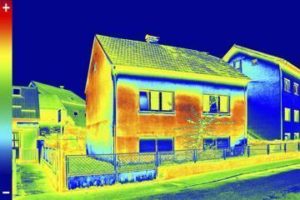 Complete Spray Foam is committed to “house as a system” thinking. Our trained and certified professionals believe that every change or introduction of a product into a home will affect the whole of a house, not just a single area. Careful evaluation is necessary to reach the maximum energy efficiency potential of a home, combined with years of experience and cutting-edge ‘building envelope’ technology.
Complete Spray Foam is committed to “house as a system” thinking. Our trained and certified professionals believe that every change or introduction of a product into a home will affect the whole of a house, not just a single area. Careful evaluation is necessary to reach the maximum energy efficiency potential of a home, combined with years of experience and cutting-edge ‘building envelope’ technology.
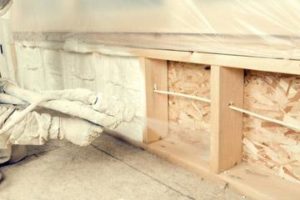 With proper application, Spray Foam will last the lifetime of your home. Even roofing applications will last upwards of 30 years, with proper long-term maintenance. Spray Foam insulation adheres extremely well to virtually all substrates, and maintains its rigidity once dry.
With proper application, Spray Foam will last the lifetime of your home. Even roofing applications will last upwards of 30 years, with proper long-term maintenance. Spray Foam insulation adheres extremely well to virtually all substrates, and maintains its rigidity once dry.
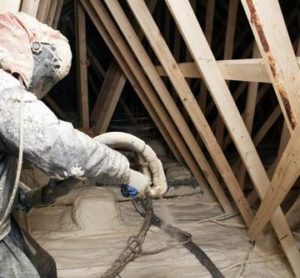 Unlike fiberglass or cellulose, Spray Foam completely stops air leakage, dust and pollutants
Unlike fiberglass or cellulose, Spray Foam completely stops air leakage, dust and pollutants- Spray Foam will never lose rigidity, overall structural integrity is improved
- Spray Foam is a permanent and effective barrier against air/moisture entry and heat loss
- Spray Foam adds strength and durability to your home against wind, earthquakes and ‘settling’ over time
- Minimizes air leakage, dust and pollutants from coming in
- Does not sag over time
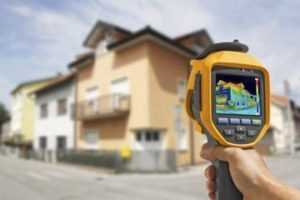 Most moisture that accumulates in a home is due to uncontrolled air leakage. Since Spray Foam is such a superior barrier against uncontrolled air ventilation, this problem is virtually eradicated. In addition, the rigidity of the insulation once dried makes it impervious to water retention, and does not support the growth of mould or mildew.
Most moisture that accumulates in a home is due to uncontrolled air leakage. Since Spray Foam is such a superior barrier against uncontrolled air ventilation, this problem is virtually eradicated. In addition, the rigidity of the insulation once dried makes it impervious to water retention, and does not support the growth of mould or mildew.
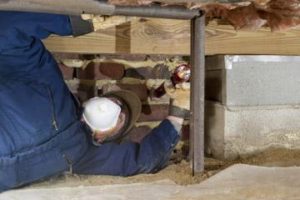 With proper application techniques and safety procedures, an entire home can be insulated within a 2-3 days. Complex design features or large commercial structures may require a longer installation time.
With proper application techniques and safety procedures, an entire home can be insulated within a 2-3 days. Complex design features or large commercial structures may require a longer installation time.
 This is not recommended. The proper application of Spray Foam insulation not only requires specific technical gear, but also extensive knowledge of application and safety procedures. This is why our professional installers undergo comprehensive on-going training. At Complete Spray Foam, a commitment to best practices and a passion for leading edge technology is your assurance that we care about you, your project and your living environment.
This is not recommended. The proper application of Spray Foam insulation not only requires specific technical gear, but also extensive knowledge of application and safety procedures. This is why our professional installers undergo comprehensive on-going training. At Complete Spray Foam, a commitment to best practices and a passion for leading edge technology is your assurance that we care about you, your project and your living environment.
Icynene Spray Foam insulation is an insulation and air barrier material that seals walls, floors and ceiling cavities against air movement, including spaces around electrical outlets and light fixtures and where walls meet windows and doors. Icynene Spray Foam insulation can provide an effective air barrier insulation to minimize air infiltration through walls and ceilings, preventing drafts, cold spots and energy loss. The performance of Icynene Spray Foam insulation means that humid indoor/outdoor air is restricted from entering the walls & ceilings and condensing, thereby minimizing the possibility of moisture entrapment & build-up within the wall & ceiling cavities. This is conducive to preventing building envelope failure due to moisture damage.
Icynene Spray Foam insulation products include half-pound, open-cell and two-pound, closed-cell solutions which can be used separately or in tandem within a project to provide long-term thermal comfort and air sealing. Icynene Spray Foam insulation products are installed by extensively training and licensed Icynene® contractors only.
Icynene Spray Foam insulation products are extensively tested in a range of different categories including, but not limited to, fire, emissions, sound transmission and energy performance. Icynene Spray Foam insulation products have been extensively assessed and evaluated by global product approval organizations including the International Code Council Evaluation Service, the Canadian Construction Materials Center and the International Association of Plumbing and Mechanical Officials Uniform Evaluation Service.
North American evaluation reports for Icynene Spray Foam insulation products can be found on the following US and Canadian websites:
Additional testing and evaluations have been conducted by the Saskatchewan Research Council, the Institute for Research in Construction, Health and Welfare Canada and the Ontario Ministry of Housing, Materials Evaluation Commission, the NAHB Research Center, the Oak Ridge National Laboratories and the Florida Solar Energy Center. In Europe, Icynene Spray Foam insulation have been assessed by the British Board of Agrément, ATec: Avis Technique, the EEA: European Economic Area and the VTT: European Technical Approval.
Typically, buildings expand and contract due to temperature differentials, moisture content, wind load and seismic etc. Closed-cell insulation cannot accommodate the movement of the building. Open-cell Spray Foam:
- Provides air sealing benefits in many applications at lower cost
- Vapor permeability supports bi-directional drying of assemblies – critical in warm climate zones/seasons
- Flexibility allows it to expand and contract with any movement of the building structure ensuring long term air sealing
- Water-blown product maintains a lower GWP (GWP 1) than most closed-cell products
Most Icynene Spray Foam products do not contain environmentally harmful blowing agents like HFCs, HCFCs or HFAs, in fact most Icynene Spray Foam insulation products are 100% water-blown making them better for the environment. Organic chemical compounds from petroleum extract are the main source of its ingredients. Additionally, our LD-R-50 product contains castor oil, a sustainable resource for a greener, cleaner future. VOC emission testing by Saskatchewan Research Council has revealed that there were no VOC emissions after 30 days.
The R-Values of insulating materials are measured in laboratories under ideal conditions and the conductive heat transfer property is the only property that is measured. However, in reality, convective heat transfer plays a big role when it comes to energy performance of a house. Icynene provides superior energy performance over air-permeable insulation because of its air barrier capability even though they both have similar R-values.
Extensive computer modeling and field data have shown that the energy performance of Icynene at much lower R-values almost always outperforms fiberglass insulation in the field due to its superior air-sealing ability. Hence, although we usually recommend lower R-values than fiberglass, Icynene’s thermal performance in the field is superior in terms of the energy efficiency of a building.
R-value is determined from a controlled laboratory test of an insulation’s resistance to conductive heat flow.
- Icynene Classic (LD-C-50) has an R-Value of 3.7 per inch.
- Icynene Classic Max has an R-Value of 3.7 per inch.
- Icynene MD-C-200 has an R-Value of 6.75 per inch.
- Icynene LD-R-50 has an R-Value of 3.7 per inch.
- Icynene MD-R-200 has an R-Value of 5.2 per inch.


